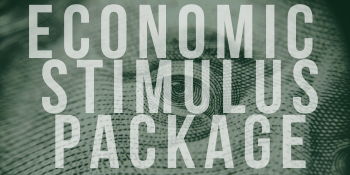By Steven Houle, Vice President of Advisory Services
A $2 trillion stimulus measure, approved by Congress and signed by President Trump on March 27, aims to relieve the severe economic agony brought on by the COVID-19 pandemic. The stimulus will sweep broadly across the U.S. economy, reaching nearly every segment, but how it will affect credit unions may vary widely – based on their differing memberships.
pandemic. The stimulus will sweep broadly across the U.S. economy, reaching nearly every segment, but how it will affect credit unions may vary widely – based on their differing memberships.
However, nearly all credit unions should be thinking about some general considerations during these unprecedented times.
Credit unions should be mindful of liquidity and credit profiles over the next few months – and perhaps, even longer.
Credit unions may experience a demand for liquidity from members, particularly those who have been adversely affected by their employment situation. These members may need to draw on their deposits before they receive unemployment and stimulus checks (assuming they qualify). Members may also start increasing their credit card balance or utilize lines of credit.
On the flip side, many credit unions are experiencing strong loan demand, particularly mortgage loans, as interest rates have fallen and refinance activity has surged.
Faced with opposing – but equally challenging – scenarios, what should a credit union do to effectively manage liquidity and credit risk?
First, a credit union should quantify its current liquidity position for at least the next 30 days. The analysis should include cash and cash flows from projected loans and investments. This amount should be compared against its loan pipeline and funding commitments. Once that baseline has been measured, a credit union should run some adverse scenarios that include deposit outflows and receiving less principal from existing loans because of delinquencies.
These scenarios will help a credit union quantify its potential liquidity shortfall and subsequent course of action. Small shortfalls for a few days are easily managed; significant shortfalls for an extended period are more challenging. The challenging shortfalls will require ongoing monitoring of cash flows, assessing secondary sources of liquidity and effectively managing loan and deposit rates.
Regardless of whether a credit union experiences a liquidity shortfall or not, this volatile environment warrants a review of lines of credit, borrowing capacity, unencumbered collateral and capacity for non-member deposits. Such a review will help a credit union effectively mitigate liquidity risk.
Credit risk, on the other hand, can be harder to mitigate.
However, identifying larger loans and lower credit tiered borrowing categories would be a first step in assessing risk at hand. Credit unions should also review their allowance account and consider the impact rising delinquencies will have over the near future.
As we talk to credit unions daily in this whipsaw economy, we realize that there is no “one-size-fits-all” prescription. Quick and proactive thinking, however, goes a long way toward preventing risks from escalating beyond a manageable level.